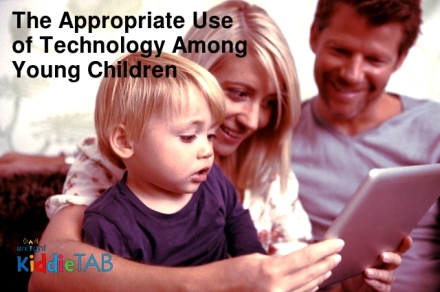 These days, the question that most parents and educators ask is no longer about whether and to what extent technology should be used with young children, but rather how it should be used. The appeal of technology and the steady stream of new devices may lead some parents and teachers to use technology for technology’s sake, rather than as a means to an end.
These days, the question that most parents and educators ask is no longer about whether and to what extent technology should be used with young children, but rather how it should be used. The appeal of technology and the steady stream of new devices may lead some parents and teachers to use technology for technology’s sake, rather than as a means to an end.
Here are a few guidelines to remember when introducing technology to young children.
1. Technology and media should be active, hands-on, engaging, and empowering.
Unlike passive media (such as TV), more engaging, interactive media and technology (such as educational games) that encourage children to explore, create, problem solve, think, listen, view critically, make decisions, observe, document, research, and investigate ideas improve their cognitive development the most.
2. Technology should be balanced with other off-screen activities necessary for optimum development.
 While there have been lots of evidence on the positive effects of technology on children’s learning and development, access to gadgets and media should not exclude, diminish, or interfere with children’s healthy communication, social interactions, play, and other developmentally appropriate activities with peers, family members, and teachers. Parents are highly encouraged to provide children with time for digital learning, social interaction, and outdoor play for a healthy cognitive, social, emotional, physical, and linguistic development of the child.
While there have been lots of evidence on the positive effects of technology on children’s learning and development, access to gadgets and media should not exclude, diminish, or interfere with children’s healthy communication, social interactions, play, and other developmentally appropriate activities with peers, family members, and teachers. Parents are highly encouraged to provide children with time for digital learning, social interaction, and outdoor play for a healthy cognitive, social, emotional, physical, and linguistic development of the child.
3. Technology and media should not be harmful to children in any way.
It goes without saying that with the vast variety of content on the internet, it is necessary that technology and media should never be used in ways that are emotionally damaging, physically harmful, disrespectful, violent, degrading, dangerous, exploitative, or intimidating to children. Block sites that give children undue exposure to violence or highly sexualized images as these may be emotionally damaging and exploitative.
4. Technology and media should consider the age, developmental level, needs, interests, and abilities of each child
Children interact with technology following a developmental progression similar to their use of other learning materials. Typically, they move from exploration to mastery and then to functional subordination (using the tools to accomplish other tasks). Children need time to explore the functionality of technology before they can be expected to use these tools to communicate. Simple touch screen devices, such as tablets, are a good starting point for exploration and experimentation. Parents and educators should also select the type of content the child is consuming taking into consideration the age of the child, his developmental stage, and his interests.
5. Effective use of technology should connect on-screen and off-screen activities.
Tech tools have the potential to bring adults and children together for a shared experience, rather than keeping them apart. For example, a parent may choose to read a story in traditional print form, as an interactive e-book on an electronic device. When experienced in the context of human interaction, these different types of engagements with media become very similar. Early book reading and other joint adult-child exploration can include co-viewing and co-media engagement.
6.Interactions with technology and media should promote play and exploration.
Play is vital to children’s development and learning. Their interactions with gadgets are similar to how they use other play materials and include sensorimotor and games with rules. Young children need to explore technology and interactive media in playful and creative ways. They should be able to control and explore the functionality of the medium, think of ways how it may be used in real life, and control the outcome of the experience through self-correcting learning activities. Interactive digital and collaborative games allow for these types of experiences.
vital to children’s development and learning. Their interactions with gadgets are similar to how they use other play materials and include sensorimotor and games with rules. Young children need to explore technology and interactive media in playful and creative ways. They should be able to control and explore the functionality of the medium, think of ways how it may be used in real life, and control the outcome of the experience through self-correcting learning activities. Interactive digital and collaborative games allow for these types of experiences.
7. Effective use of technology should support and extend traditional learning tools in valuable ways
Technology and interactive media provide numerous opportunities for children to learn further alongside traditional materials, such as blocks, manipulatives, art materials, play materials, books, and writing materials. Screen media that expose children to animals, objects, people, landscapes, activities, and places that they cannot experience in person. Drawing on a touch screen can add to children’s graphic representational experiences; manipulating colorful acetate shapes on a light table allows children to explore color and shape. These opportunities should not replace paints, markers, crayons, and other graphic art materials but should provide additional options for self-expression.
When used appropriately, technology effectively enhances a child’s cognitive and social skills. Get valuable information, tips, and strategies on raising children in the digital age. Click here for FREE UPDATES.
Resources:
“Technology and Interactive Medias Tools in Early Childhood Programs Serving Children from Birth through Age 8”published by NAEYC. National Association for the Education of Young Children, (2012)
“How Does Early Exposure To Technology Help Children’s Development?” TechUseful, 2013
